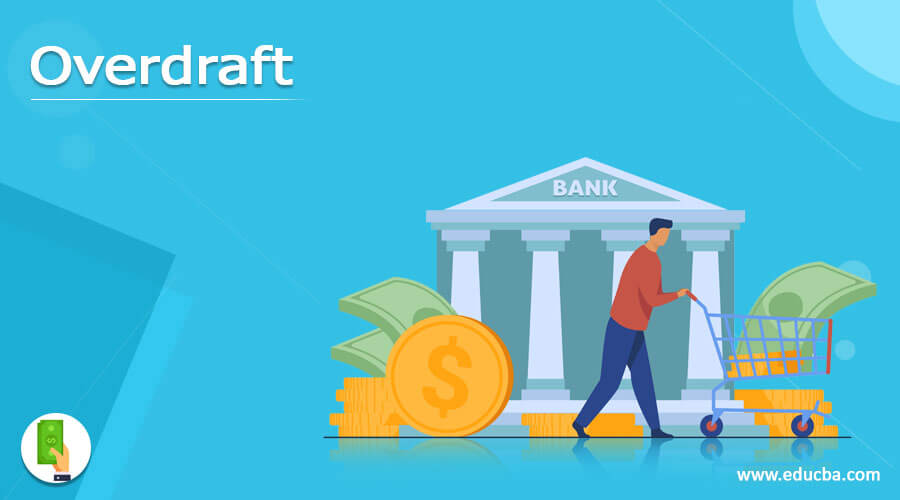Updated July 10, 2023
What is an Overdraft?
The term “overdraft” refers to the facility banks provide to which account holders can borrow a certain sum of money higher than their actual account balance.
The lender’s levy overdraft fee and interest on the borrowed money must be returned within a given time frame. Most banks offer an overdraft facility automatically, whereas the account holders sometimes have to apply for the facility.
How Does Overdraft Work?
Under overdraft protection, if an account holder’s checking account balance becomes negative, they can access a predetermined loan extended by the bank, especially for such occasions. The lender charges a processing fee and interest on the borrowed money. In most cases, this facility is used for short-term business requirements. However, it also prevents a check from bouncing and saves the account holder from humiliation.
Examples of Overdraft
Let us look at a simple example to understand the concept of an overdraft facility. Suppose John owed $500 to Lily and accordingly issued her a cheque for the same amount. However, John only had $300 in his bank account. So, his cheque was likely to bounce in this case due to inadequate funds.
However, his bank provided him with an overdraft facility that took care of the remaining $200, the cheque went through, and Lily received her amount in full. Nevertheless, the bank considered the $200 the borrowed amount and charged overdraft fees and interest until John returned the entire money.
Types of Overdraft
There are two broad categories as follows:
1. Authorized Bank Overdraft
The account holder and their bank organize the arrangement in this type of facility, thereby deciding all the terms and conditions of the facility in advance. This arrangement comes with a service fee that may vary depending on the type of account and the borrower’s creditworthiness. Further, an interest charge will be as high as a 15% to 20% annual percentage rate.
2. Unauthorized Bank Overdraft
This facility has no prior agreement between the account holder and their bank. However, the bank extends the borrowing limit if the account holder’s balance goes negative. Further, this facility can also come into play even in an authorized bank overdraft if the borrowing amount exceeds the agreed overdraft limit. However, the fees are relatively higher in the case of an unauthorized overdraft facility.
Overdraft Limit
Almost all banks offer an overdraft facility, given that fees earned on overdraft facilities are one of their most lucrative income sources. However, the limited facilities depend on various factors. The banks assess the creditworthiness of the account holders and factor in their age and earnings while deciding the overdraft limit. People new to credit or those with a history of bankruptcy find it difficult to get an the facility. The limit of this facility is entirely at the discretion of the bank.
Benefits
Some of the major benefits are as follows:
- It ensures that account holders can carry out their transactions even after their account balance goes zero or negative and, in the process, avoid consequent dishonor charges.
- It allows the account holders to gradually repay the borrowed amount at their convenience. They can either pay the entire amount in one go or break it down into frequent payments that suit their financial condition and preferences.
- The interest is charged only on the amount borrowed over the account balance, not the full principal.
Disadvantages
Some of the major disadvantages are as follows:
- The lenders levy relatively higher interest rates on the borrowed amount than other types of loans. This can result in significant interest servicing on a small loan amount.
- The account holders can’t use this facility for a very large amount because this type of facility is extended as a line of credit not exceeding a certain proportion of the average account balance.
- The lenders have the right to ask for the repayment well before the stipulated timeline or modify the borrowing limit. The bank can do all these at its discretion.
Key Takeaways
Some of the key takeaways of the article are:
- An overdraft facility is a facility that banks provide account holders when they lack the funds to cover their withdrawals. So, the account holders can continue paying the bills even if they don’t have a sufficient account balance.
- There are two types – authorized and unauthorized.
- Like any other loan, the account holder has to pay interest on the borrowed amount under the overdraft protection facility and repay the money within a stipulated timeline.
- The limit for this facility depends on a wide range of factors, such as credit rating, age, and earnings of the account holder.
Conclusion
So, it can be seen that the overdraft facility is an important financial instrument for account holders. It ensures that all transactions occur without fail despite insufficient funds in the payer’s account. However, the account holders must have a healthy credit rating and adequate earnings to avail of this facility.
Recommended Articles
This is a guide to Overdraft. Here we also discuss the definition, working, example, types, and Overdraft limit, along with benefits and disadvantages. You may also have a look at the following articles to learn more –


